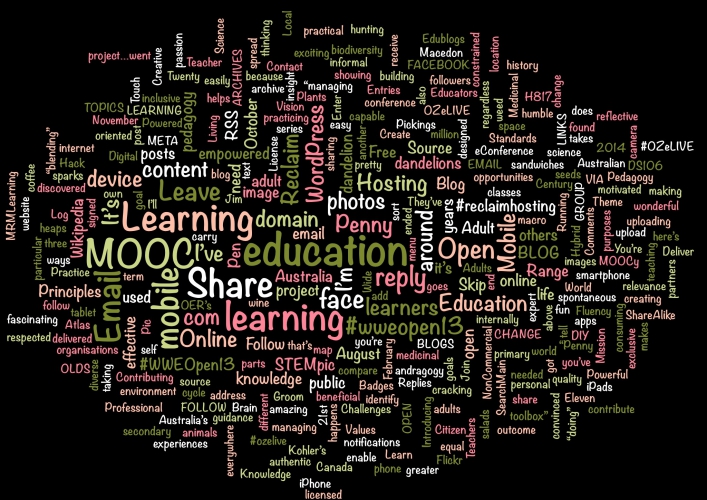Today, the expansion of ICT has created a new framework of inclusion and exclusion from the global realm. According to Jean Vanderspelden – EPALE Agency expert for Erasmus+ France in the field of e-learning – the society is now divided in two.
“On the one hand, there are the digital natives, people who were born with new technologies, and on the other hand there are the digital immigrants, a population which had to learn afterwardS, with more or less of success, how to use new technologies. Therefore, the possession of digital skills remains a key aspect of living in society, especially in the education field.”
E-learning for example, which is an Internet based teaching system, is now expanding more and more, allowing the learner to become the author of his/her own education. The rise of one of the best-known e-learning tools, the MOOC, is not negligible: from 2012 to 2015, over 25 million people from around the world have enrolled in MOOCs, according to a Harvard study.
The sources of e-learning
According to the French philosopher Michel Serres, there is an increasing demand for education, but not enough resources to meet it. As a consequence, it generates exclusion in education. One of the solutions is to use e-learning methods. This process is already developed in Europe, where few platforms were created to provide online university courses. At the European level, the integration of open education into European education systems is a policy objective, which was raised by the Opening Up Education communication in September 2013 and was also included as one of the renewed priorities of ET2020.
The term MOOC stands for “Massive Open Online Courses”. “MOOCs gave a quantitative aspect to the e-learning sector,” says Jean Vanderspelden.
A MOOC is a type of online class aimed at unlimited participation and open access via Internet. If some people denounce the difficulty for some to access Internet, the need of pre-existing digital skills or the low completion rate of MOOCs, they remain much followed.
The last research released by Harvard demonstrates that among learners who have completed courses, MOOCs do have a real impact: 72% of survey respondents reported career benefits. In addition, given the large number of users involved, the absolute reach of MOOCs is still significant, even if only few people complete the whole course.
“MOOCs today offer a high degree of freedom for the learners. However, if the diversity, open access and quality of the MOOCs are factors of their success, motivation from learners is still the key,” says Jean Vanderspelden.
MOOCs learner profile needs an update
MOOCs can have a significant role when it comes to engaging new learners.
In his article “Perspectives on MOOC and its impact on higher education”, Dr Abhijit Gangopadhyay stated that “MOOCs led to increased interest in education for non-traditional students”. Indeed, up to 85% of Coursera’s students – an American MOOC platform – are adult learners.
However, concerning the profile of European MOOCs users, the European Commission study suggests that MOOCs learners in Europe are individuals from privileged socio-economic backgrounds. They have usually completed higher education (80%) and have high levels of digital competences.
Jean Vanderspelden also confirms this trend, saying that most of the MOOCs are designed for people who have already been engaged in higher education. If MOOCs seemed to be designed at first for the most advantaged people, other types of MOOCs have also been created. Targeting a non-graduated audience, AFPA organised in France a MOOC for migrants.
“This MOOC focused on low qualified adults and gave them the opportunity to learn more about the French language and culture,” Jean Vanderspelden confirms.
A wide range of e-learning tools
The MODERN Toolkit project also contributed to spread the use of new technologies for educational purposes. Organised by EfVET with 4 other partners, the project focuses on increasing the use of digital learning resources by trainers and educators. To do so, they realised an audit of 80 existing mobile, online and digital resources – from Youtube to Canva – and they selected the best 20 resources, including Edpuzzle and WordPress. In the meantime, they also developed a toolkit and the resources have been categorised and assessed for their applicability in a teaching and learning environment.
According to Valentina Chanina, projects & office manager at EfVET, the MODERN Toolkit project provides “the only website in the world that has actually had educators looking at and rating every tool”.
According to the growth agenda of the Europe 2020 strategy, around 90% of jobs are estimated to need at least some level of digital skills in the European Union.
“Acquiring those skills is thus becoming a precondition for workers to become and remain employable,” Valentina Chanina added.
The use of e-learning can be seen as a key to help engaging new learners. If MOOCs certificates currently have low value in the labour market and in formal education, they can help students to become confident and gain skills. Also the European Union has taken into consideration this new approach of learning. One of the policy recommendations of the European Commission in its article about MOOCs in Europe is to promote the use of MOOCs for re-skilling and up-skilling both unemployed people and workers.
This article is a part of the article series” Engaging new learners”, which is one of EAEA’s key topics in 2017.
Text: Lou-Andréa PinsonPhotos: MODERN Toolkit project, Penny Bentley / Flickr

